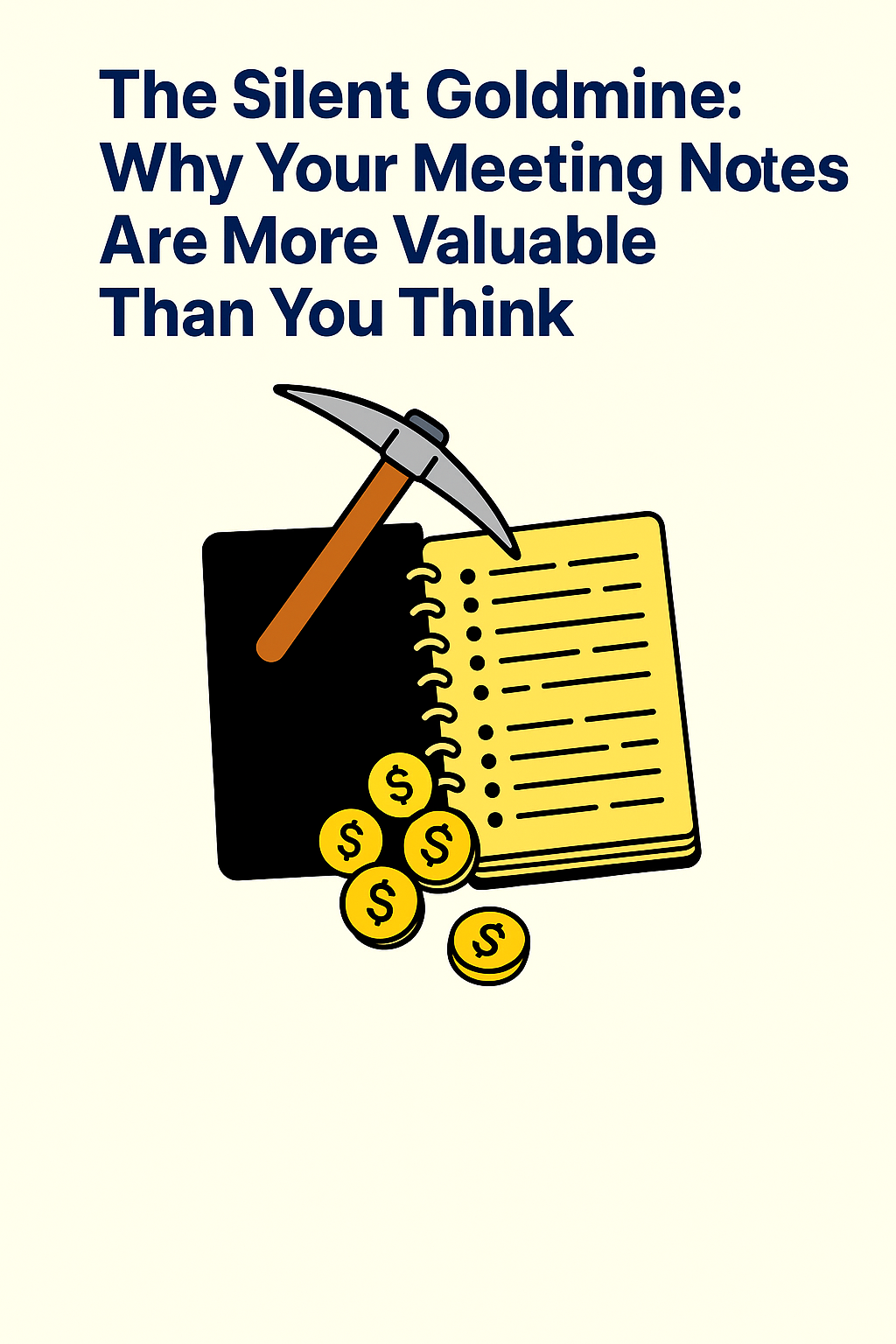The Silent Goldmine: Why Your Meeting Notes Are More Valuable Than You Think
Learn how scattered notes are costing you insight—and how to centralize, tag, and mine them for growth opportunities.
Sarah Chen
Co-Founder & CEO

👋 Let's be honest…
Your team has a ton of customer conversations.
Product discovery calls. Support tickets. Sales demos. Success check-ins.
Everyone's taking notes—but they're trapped in Google Docs, Notion, emails, or lost in someone's notebook.
You're sitting on a silent goldmine of insight. But without the right system to capture and interpret it, you're leaving strategic decisions to chance.
The Problem: Scattered Notes = Lost Insight
Here's what usually happens:
- Sales hears "we need integrations"
- Support hears "the UI's confusing"
- Product hears… nothing
- The team builds what's easiest—not what matters most
Sound familiar?
Without centralized, structured notes, you end up:
The Opportunity: Turning Chaos into Strategy
Your notes aren't just documentation—they're data.
They hold:
If you tag, organize, and analyze your notes, you unlock insights that fuel:
That's when notes become strategic assets.
Step 1: Centralize All Customer Conversations
You can't mine what you can't find.
Start by creating a single source of truth:
Pro Tip:
Tools like GetActionNotes let you auto-import meetings and assign tags as you type.
Step 2: Tag Your Notes with Context
Structure is everything.
Tag notes with:
Topic
e.g. pricing, onboarding, integrations
Customer type
e.g. SMB, enterprise, existing, prospect
Sentiment
e.g. positive, negative, neutral
Urgency or churn risk
e.g. high, medium, low
These tags let you sort, search, and spot trends over time—automatically.
Step 3: Analyze & Share the Patterns
This is the magic moment.
Once your notes are centralized and tagged, you can:
With AI tools like GetActionNotes, you can even automate:
Insight summaries
Weekly trend digests
Dashboards by team or theme
TL;DR
Your notes aren't just a record.
They're a roadmap.
Stop letting them sit unused in siloed tools. Centralize them. Tag them. Use them.
Because the truth is: your customers are already telling you what to do next. You just need to listen better.
✨ Ready to Start Mining Your Own Note Goldmine?
Related Articles
How Product and CS Teams Can Finally Align Around Customer Feedback
Collaboration isn't just a nice-to-have. Discover frameworks and tools for making shared insights part of your team's operating rhythm.
What AI Can (and Can't) Do With Your Customer Conversations
A no-fluff guide to using AI for summarizing, tagging, and pattern-finding—without replacing human judgment.
From Talk to Roadmap: Turning Feedback into Feature Strategy
Not all feedback is created equal. Here's how top product teams prioritize insights based on context, not just volume.